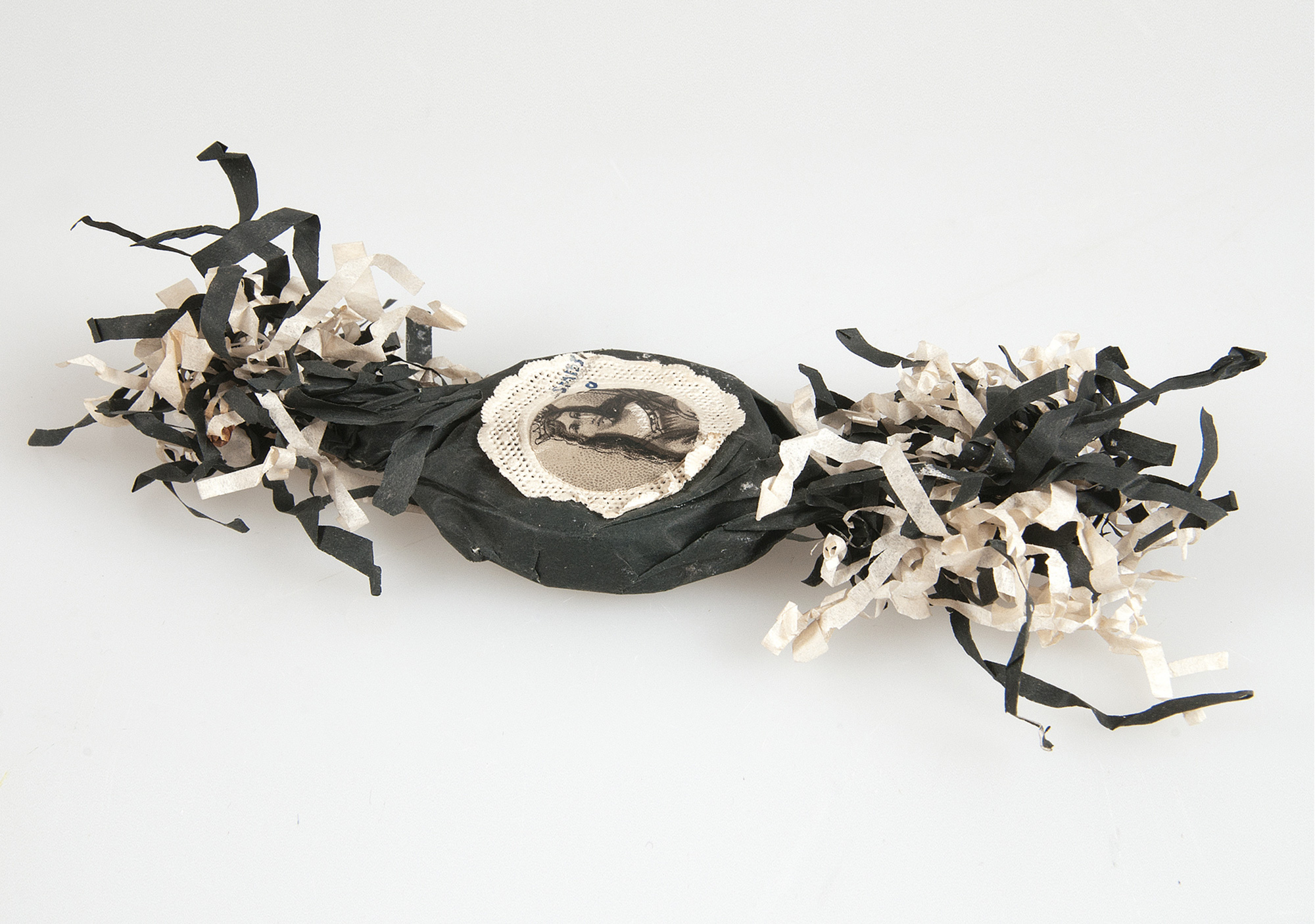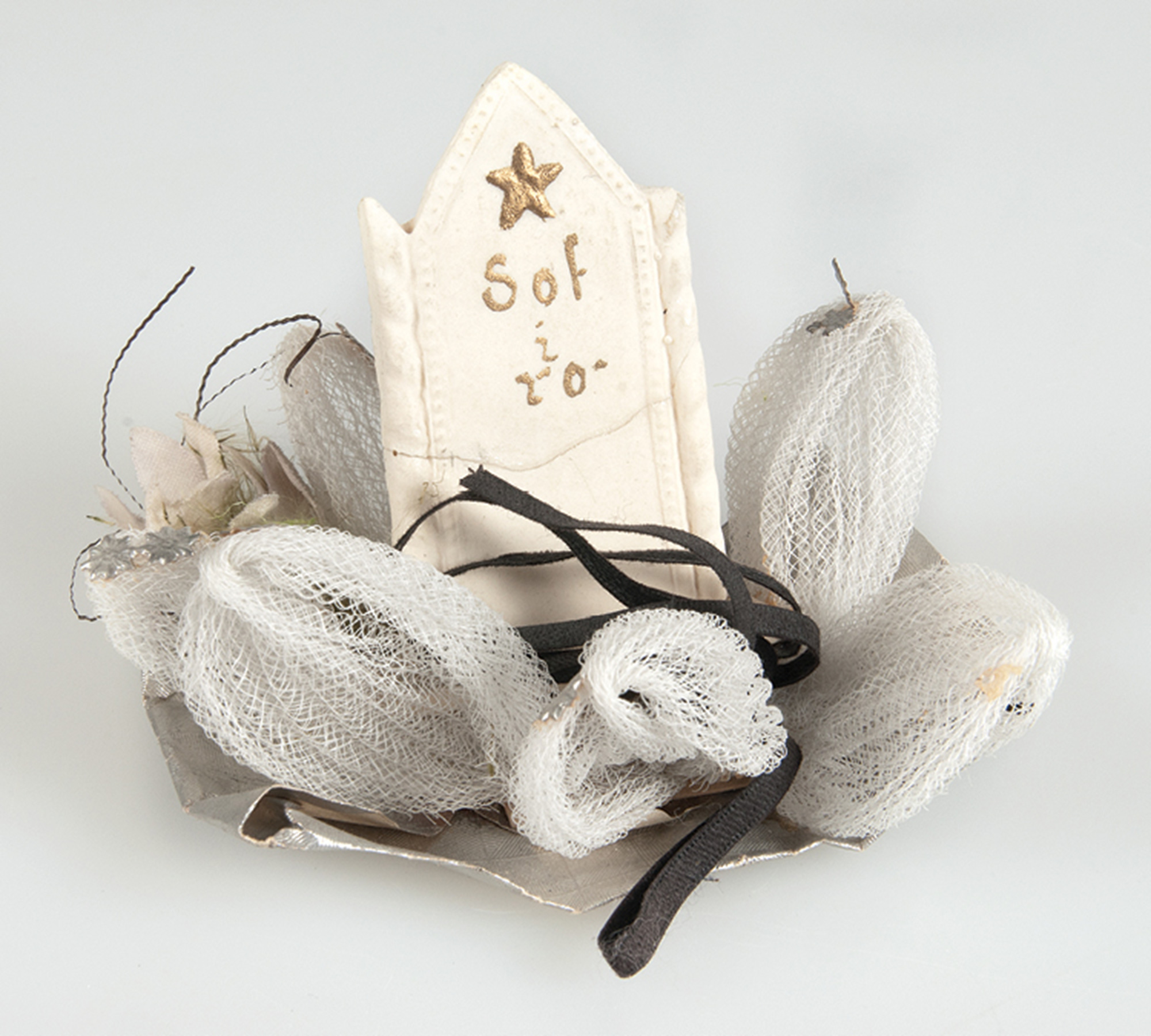Sweet Kiss of Death
Swedish funeral candy
Mats Bigert

The rounded shape of the tin cookie cutter represents a simplified human body. Limbless, it is restricted like a tightly wrapped mummy, which hints at its purpose. It is a memento of a now forgotten practice that was based on a hard, white, sweet substance—the raw material of funeral candy.
From the mid-nineteenth century on, it became customary among Swedish peasants to offer candy and wine to guests arriving at the home of the deceased prior to the funeral, a tradition designed to fortify the participants for the ceremony. “Funeral confectionery” was the vernacular term used to describe the various elaborately wrapped candies served before and after the funeral service. The candy wrappers were meticulously decorated works of art whose design matched the mood of the gloomy occasion. Commonly wrapped in shiny black tissue paper adorned with images of the Madonna and child, silver angels, or black crucifixes, the candy—instead of evoking childhood innocence, as it usually does—here performed a more serious role. The wrapper was fringed, and the length and width of the fringes suggested the age of the deceased; long and thin would indicate the death of an old person.
Sometimes the presentation of the candy itself would suggest the sculptural. Various materials could be used, such as stiffened gauze, wax, and tulle, to provide a platform for miniature objects. There were tombs with inscriptions like “mourned” or “rest in peace,” hourglasses and open books with the name of the deceased written in them. The miniature figures were made from a mixture of sugar and tragacanth, a natural gum obtained from the dried sap of certain Middle Eastern plants.
The practice of offering meticulously wrapped candy at funerals might be linked to the medieval use of kultbröd (magic cult bread). Initially baked as an offering to the gods of fertility, Swedish cult bread was made with goat cheese and sweetened with honey. Adorned with medieval geometric patterns stamped into the dough using a wooden form, the breads resembled huge communion wafers. But instead of having a sacred function, they were given by the bride to the groom on the wedding night as a fertility enhancer. (Wafers containing herbal substances were also sold by cloisters for medical purposes.)

With the increasing availability of sugar in the sixteenth and seventeenth centuries, the breads became progressively sweeter. By the early eighteenth century, the bread was so packed with sugar that it had been transformed into a “pastille,” or a concentrate of herbs contained in a hard sugary shell. As a result, production of these sweets was taken over by confectioners, specialized “sugar bakers” whose guild in Stockholm was founded in 1767.